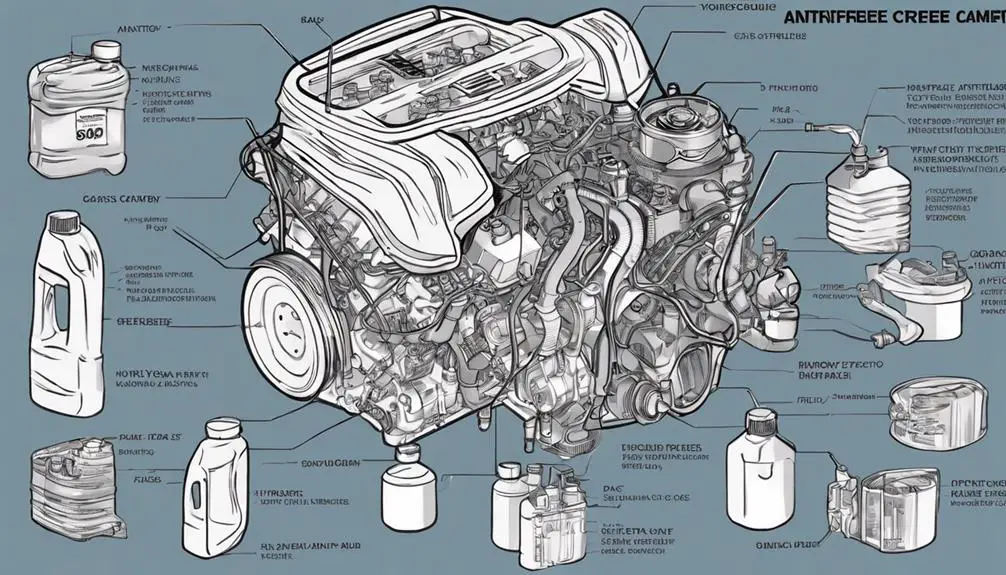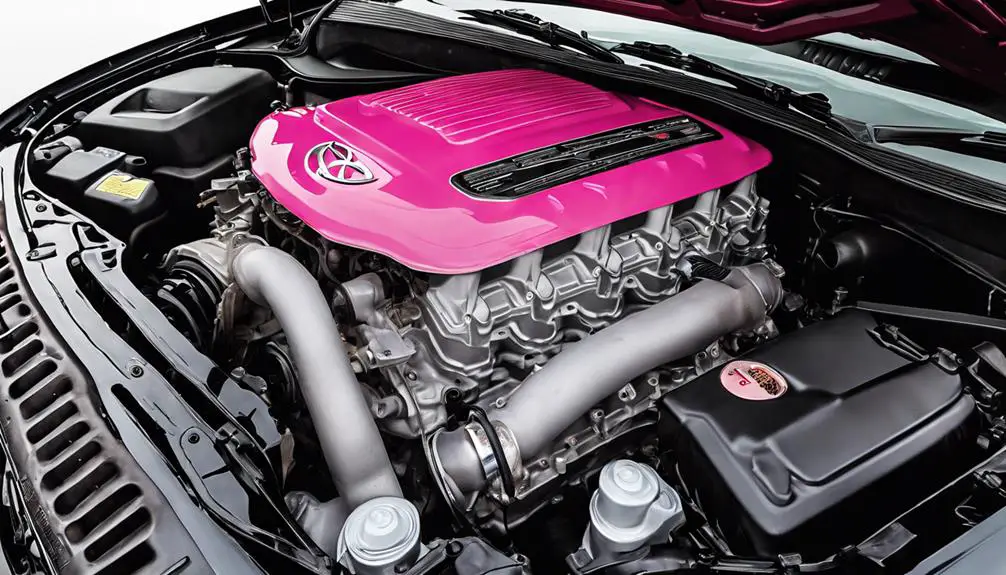Interested to know about the 2012 Toyota Camry Backup Camera? Keep reading.
Backup cameras are essential tools that enhance vehicle safety by providing a clear view of the area behind your car while reversing.
For owners of the 2012 Toyota Camry, installing a backup camera can significantly improve visibility and safety, reducing the risk of accidents.
This article guides you through the selection, installation, and maintenance of a backup camera specifically for the 2012 Toyota Camry.
Whether you are looking to install a new system or upgrade an existing one, this guide will provide you with all the necessary information to make informed decisions.
Overview of Backup Cameras
Types of Backup Cameras
Backup cameras come in two main types: OEM (Original Equipment Manufacturer) and aftermarket.
OEM cameras are designed specifically for your vehicle model and are often integrated into the vehicle’s existing display system.
Aftermarket cameras are more versatile and can be installed in almost any vehicle but may need extra setup for integration.
Wired backup cameras connect directly to your car’s electrical system and typically offer more reliable signals.
Wireless cameras are easier to install as they do not require running wires through the vehicle, but they can be prone to interference.
Features to Look for in a Backup Camera
When selecting a backup camera, several features are crucial for ensuring optimal performance and compatibility with your 2012 Toyota Camry.
Resolution is important as it determines the clarity of the camera’s image; higher resolution cameras provide clearer images.
The field of view should be wide enough to capture the necessary scope behind your vehicle, typically between 120 and 180 degrees.
Night vision is another critical feature, enabling the camera to produce clear images in low light conditions.
Weather resistance ensures the camera functions effectively in various environmental conditions, such as rain or snow.
Some cameras also offer additional features like parking guidelines, which can assist in safely maneuvering your vehicle.
Selecting the Right Backup Camera for Your 2012 Toyota Camry
Compatibility Check
Before purchasing a backup camera, it is crucial to ensure that it is compatible with your 2012 Toyota Camry.
Check the camera specifications to see if it can be integrated with your car’s existing systems, such as the display or infotainment unit.
Consider the installation process; some cameras might require more extensive modifications to fit your vehicle.
A compatibility checklist can help you verify that the camera meets all necessary criteria for a successful installation.
Top Recommended Backup Cameras
For the 2012 Toyota Camry, several backup cameras stand out due to their compatibility, ease of installation, and robust feature sets.
Look for cameras that offer both high-quality image resolution and a wide viewing angle to ensure maximum coverage and visibility.
Models with built-in night vision capabilities are preferable for clear nighttime backing.
Consider cameras that are specifically designed for the Toyota Camry or those that are known for their universal compatibility and ease of use.
Selecting from these top recommended models ensures that you get a reliable, functional, and durable backup camera system for your vehicle.
Installation Guide
Pre-Installation Preparation
Before beginning the installation process, gather all necessary tools and materials.
This typically includes a screwdriver, drill, wire strippers, electrical tape, and any specific tools recommended by the camera manufacturer.
Review the installation instructions provided with your backup camera carefully.
Plan the route for wiring from the camera to the display inside your vehicle, considering the easiest path that minimizes interference with other vehicle components.
Ensure your vehicle’s battery is disconnected before starting the installation to prevent any electrical issues.
Step-by-Step Installation Instructions
First, determine the optimal location for the backup camera on your 2012 Toyota Camry, usually near the license plate or on the trunk lid.
Mount the camera securely using the provided hardware, ensuring it has a clear view of the area behind the vehicle.
Route the power and video cables from the camera to the front of the vehicle, hiding wires under trim panels or carpeting for a clean installation.
Connect the video cable to the display monitor in your dashboard. If your Camry does not have a pre-existing display, you may need to install a compatible monitor.
Connect the power wire to a power source that is activated when the vehicle is in reverse, such as the reverse light power wire.
Reconnect your vehicle’s battery and test the backup camera system to ensure it powers on and displays a clear image when the vehicle is in reverse.
Make any necessary adjustments to the camera angle to optimize the field of view.
Troubleshooting Common Installation Issues
If the backup camera does not power on, check all connections to ensure they are secure and correctly wired.
For issues with image quality, such as blurriness or interference, verify that the camera lens is clean and that cables are not running near sources of electrical interference.
If the camera does not activate when the vehicle is in reverse, double-check the connection to the reverse power source and ensure it is wired correctly.
Consult the camera manufacturer’s support resources or professional installers if you encounter persistent issues that you cannot resolve.
Integrating the Backup Camera with the Vehicle’s Display System
Integrating your new backup camera with your 2012 Toyota Camry’s existing display system requires careful attention to compatibility and connection types.
If your Camry comes with an in-dash display, check the input options to ensure it can accept video input from your backup camera.
For vehicles without a pre-existing display, consider installing an aftermarket display screen that can be mounted on the dashboard or integrated into the rearview mirror.
Use the appropriate adapter if the camera’s output does not match the display’s input, ensuring the connection can transmit video signals correctly.
Configure the display settings to automatically switch to the camera view when the vehicle is in reverse.
Test the system thoroughly to confirm that the camera and display are properly synchronized, adjusting settings as necessary for optimal viewing.
For seamless integration, neatly organize and secure all wiring to prevent damage and maintain the vehicle’s aesthetic.
Maintenance and Troubleshooting
Regular Maintenance Tips
To ensure your backup camera system remains functional and provides clear visibility, regular maintenance is essential.
Clean the camera lens gently with a soft, clean cloth to remove dirt, dust, or other obstructions that could blur the image.
Check the wiring and connections periodically for signs of wear or damage, especially after extreme weather conditions.
Keep the display screen clean and free of fingerprints for the best view of the camera feed.
Consult the manufacturer’s guidelines for any specific maintenance recommendations for your camera model.
Troubleshooting Common Backup Camera Problems
If you encounter issues with your backup camera, such as a blank screen, intermittent signal, or poor image quality, start by checking the most common problem areas.
Ensure all connections are secure and free of corrosion, which can interfere with signal transmission.
Verify that the camera and display are receiving power, checking fuses and power sources for any issues.
Adjust the camera angle if the view is obstructed or not aligned with your preferred field of vision.
For wireless systems, reduce interference by ensuring the camera and receiver are within the recommended range and there are no significant obstacles blocking the signal.
If problems persist, consult the troubleshooting section of your camera’s user manual or contact technical support for assistance.
Upgrading Your Backup Camera System
Upgrading the backup camera system in your 2012 Toyota Camry can significantly enhance the functionality and safety of your vehicle. When considering upgrades, it’s important to focus on options that are compatible with your Camry and offer tangible improvements. Here are some potential upgrades to consider:
Higher Resolution Camera: Upgrading to a camera with higher resolution can provide a clearer and more detailed image, making it easier to see obstacles behind your vehicle.
Wider Field of View: A camera with a wider field of view can capture a larger area behind your car, reducing blind spots and increasing safety.
Night Vision Enhancements: Cameras with superior night vision capabilities can improve visibility in low light conditions, making reversing at night or in dark areas safer.
Wireless Systems: If your current setup is wired, considering a wireless backup camera can simplify the installation process and reduce clutter from wiring.
Integrated Parking Sensors: Some backup cameras come with integrated parking sensors that provide audible alerts when objects are too close to the vehicle, adding an extra layer of safety.
Multi-Camera Systems: Installing additional cameras can give you a more comprehensive view around your vehicle, including side views or a bird’s-eye view, for improved navigation and safety.
When upgrading your backup camera system, ensure that the new components are fully compatible with your 2012 Toyota Camry and that you have the necessary tools and knowledge for the installation. Consider consulting with a professional installer for complex upgrades to ensure optimal performance and safety.
Conclusion
Installing or upgrading a backup camera in your 2012 Toyota Camry is a valuable investment in your vehicle’s safety.
By selecting the right camera, following detailed installation instructions, and performing regular maintenance, you can enhance visibility and reduce the risk of accidents while reversing.
Whether you’re installing a new system or upgrading an existing one, focusing on compatibility, resolution, field of view, and additional safety features will ensure you get the most out of your backup camera system.
Remember, a well-chosen and properly installed backup camera can make driving and parking your Camry safer and more convenient.












